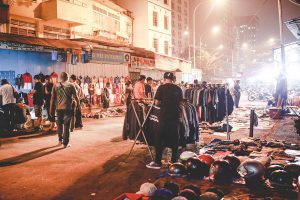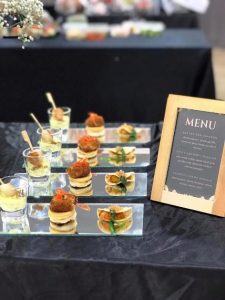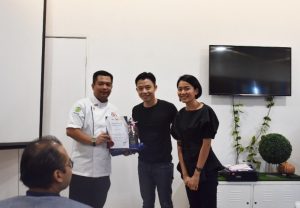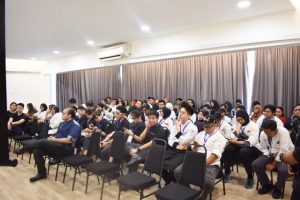by Muhammad Naim Muhamad Ali
As of 2013, the world population is estimated to be around 7, 162, 119. 434 people, with 49.5 percent of the population are women (United Nations Population Division of the Department of Economic and Social Affairs, 2019). According to the statistics provided, Malaysia accounted 31.97 million as of 2017, with 48.60 percent is female, yet their every action is still scrutinized, which in turn influences their being and livelihood (Masika & Joekes, 1996). Women, regardless of age, face society’s discrimination when doing the same things that men got away with. Women today are working together to fight for equal treatment, rights, and privileges enjoyed by their male counterparts. However, such efforts showed slow progress due to some factors.
Women generally have fewer rights and opportunities than men (Peace Corps, 2017). The report by Peace Corps highlighted that women have fewer opportunities for economic participation than men, following less access to basic and higher education, health, and safety risks and political representation. Women often assumed the role of wifehood and motherhood which were regarded as women’s most noble – if not only, professions in the early centuries. In the 20th century, for the first time in history, women in most nations, the United Kingdom for instance, finally won the right to vote, as well as to get an education and better job opportunities (Lethbridge, 2018). Perhaps most importantly, what they have fought for accomplished a reevaluation of traditional views of their roles in society

Men are generally perceived as the head of the family. As such, a man is seen as his family’s breadwinner, while his wife will be staying at home to raise their children and take care of the household. In the past, this was considered as a norm for women – to be housewives — but as time goes by, living expenses hiked due to changes in developments and policies. To cushion the rising cost of living, women then started to look for ways to contribute to their families. To do this, they started working — it doesn’t matter how much they were getting paid as long as they could help their husbands.
A year or so ago, I found an article published in The Star newspaper titled “Gender-wage bias still raging”. The article focused on the wage gap in Malaysia. In 2015, women generally earned 8.4 percent less than men. Data retrieved from the National Statistics Department’s Salaries and Wages Survey Report 2013 showed that men typically earn RM2,260 a month, while women earn RM2, 071 for doing the same job. Issues concerning the wage gap between men and women gave rise to the question: why do governments have such biased policies when it comes to salaries for men and women? Don’t women deserve to be paid as much as men? The wage gap is real, as shown in studies done throughout the years. The article too highlighted that despite being skilled, women are paid less than their male colleagues, who are paid 39.7 percent more than them (around RM588).
I recalled watching a movie based on a true event, Made in Dagenham, which dabbled about semi-skilled Ford women machinist who went on strike due to denied pay raise by the management. It may seem a cliché to some people, but this is the reality. Women hardly get pay raise because most of the time they are deemed less capable and productive than men in their work performance due to their childrearing and other related women-related roles (Masika & Joekes, 1996).
Another issue concerning women that should be addressed is, “Are women being taxed for being women?” Yes! The New York Times (2018) highlighted that women are not aware that they are paying more for certain products and services. This is due to the Pink Tax which is additional charges for certain items targeted at women. A lot of research on the pink tax found that women have been paying more than 42 percent than men, on average $1,351 a year of extra costs (Elliot, 2019). Tampons are considered a luxury and not a necessity in many countries. In the United States, some states abide by the tampon tax. The razor is, however, zero-rated in tax because it is used by men who believe that their need to be cleanly shaven is a human right. As such, it is interesting to note that whatever that is used and considered a necessity by men (in order to maintain their hygiene health) is usually zero-rated, unlike items that are needed by women for the same purpose. Is the use of tampons, not a human right? Women must pay at least US$7 for tampons for at least 40 years of their lives and as such, it is now considered a luxury that can’t even be afforded by those from poor countries.
Women did not demand to be treated like men. They demand to be treated equally – because the idea is both genders are equal, but not identical. There are things women are not supposed to do unless in circumstances that they could not afford to avoid. Society, especially men, must end the stigma and discriminations towards women because the world has evolved, and this is no longer a man’s world. Women are not second-class citizens. They do not deserve to be treated with discrimination and prejudice. Not all women are damsels in distress.
Feminism is not a dangerous word as some men would think (some might think that women are going for global domination). It is also not a dangerous movement. It only means the advocacy of women’s rights based on the equality of the sexes (Offen, 1988). People – especially men – need to understand the concept of advocating for women’s rights. They may not have to support the cause, but showing respect to it, is more than enough because how would we feel if we are treated unfairly on a daily basis? This topic might seem petty compared with racial inequality faced by some races for many years. But, in any culture and race, there are men and women who live together and each one of them should embrace and celebrate diversity and differences with respect and harmony.
References
Elliot, C. (2019). The Pink Tax- The Cost of Being a Female Consumer. Retrieved July 22, 2019, from Listen: Money Matters: https://www.listenmoneymatters.com/the-pink-tax/
Lethbridge, L. (2018, February 2). The women’s march: how the Suffragettes changed Britain. Retrieved July 22, 2019, from Financial Times: https://www.ft.com/content/22776930-05f6-11e8-9e12-af73e8db3c71
Masika, R., & Joekes, S. (1996). Employment and sustainable livelihoods: A gender perspectives. Institute of Development Studies, Gender Office of the Swedish International Development Cooperation Agency (SIDA), Brighton. Retrieved July 22, 2019
Offen, K. (1988). Defining Feminism: A Comparative Historical Approach (Vol. 14). Chicago: The University of Chicago Press. Retrieved July 22, 2019, from https://www.jstor.org/stable/3174664
Peace Corps. (2017). Global Issues: Gender Equality and Women’s Empowerment. Retrieved July 22, 2019, from Peace Corps – Educator Resources: https://www.peacecorps.gov/educators/resources/global-issues-gender-equality-and-womens-empowerment/
Salt, K. (2018, March 2). The Hidden Taxes on Women. Retrieved July 22, 2019, from The New York Times: https://www.nytimes.com/2018/03/02/business/women-hidden-taxes.html
United Nations Population Division of the Department of Economic and Social Affairs. (2019). World Population Prospects 2019. Retrieved July 22, 2019, from United Nations Population Division: https://population.un.org/wpp/DataQuery/


 It’s a Wrap Teaffani Canape Competition 2018 was a successful event that was organized by Teaffani Catering on the 25th of November 2018! They have been in the market since 2011 and was the official food caterer for the DINNER IN THE SKY back in 2017. However, this year 2018, another breakthrough for them to be organizing a Canape competition for student as part of their CSR Program under “Education and Career Development Theme”.
It’s a Wrap Teaffani Canape Competition 2018 was a successful event that was organized by Teaffani Catering on the 25th of November 2018! They have been in the market since 2011 and was the official food caterer for the DINNER IN THE SKY back in 2017. However, this year 2018, another breakthrough for them to be organizing a Canape competition for student as part of their CSR Program under “Education and Career Development Theme”.




